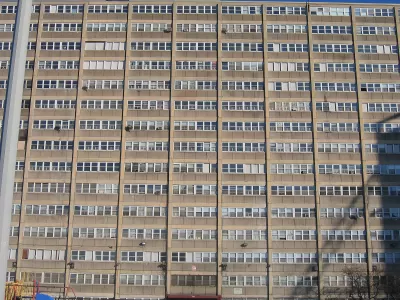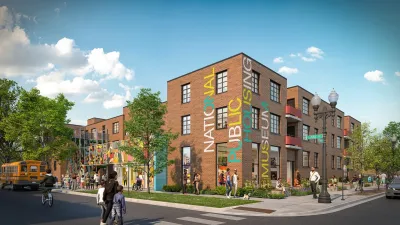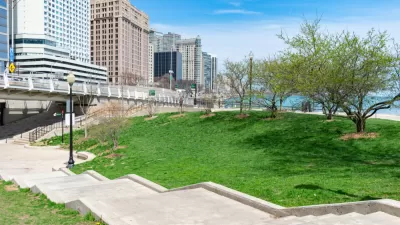The new film, set in one of America's most notorious public housing projects, highlights the failure of affordable housing policy and its impact on Black communities.

Like its 1992 predecessor, the Jordan Peele-produced Candyman places Cabrini-Green at the center of its story, making the real-life demise of the complex "the fundamental origin story of the film’s vengeful spirit." Brentin Mock describes the history and trauma that informs the film, which blends supernatural terror with extremely real horrors of neglected public housing projects and bad housing policy.
While the slasher in the film–"the apparition of a former Cabrini-Green resident who was killed by police in the 1970s"–is very real, writes Mock, gentrification is "the force that conjured it." Cabrini-Green's mostly Black residents "could live in few other neighborhoods in Chicago, due to racial covenants, job discrimination and lack of income." At the same time, "it was mostly Black people there who were first frozen out of their homes, due to the city’s withdrawal of services, and then driven out when the city decided Cabrini-Green had become too much of a blight" and had to be demolished. Today, the destruction of Cabrini-Green is "considered one of the largest losses of affordable housing stock in U.S. history."
This cruel paradox is explained with brevity in the film by Teyonah Parris's character, Brianna: "White people built the ghetto and then erased it when they realized they built the ghetto." Candyman, who shows up in mirrors when summoned, "is a reflection of destruction that white people have long visited upon Black people," says Mock, and the lingering problems that they are afraid to name.
FULL STORY: In Slasher Film ‘Candyman,’ the Horror Is U.S. Housing Policy

Planetizen Federal Action Tracker
A weekly monitor of how Trump’s orders and actions are impacting planners and planning in America.

Restaurant Patios Were a Pandemic Win — Why Were They so Hard to Keep?
Social distancing requirements and changes in travel patterns prompted cities to pilot new uses for street and sidewalk space. Then it got complicated.

Map: Where Senate Republicans Want to Sell Your Public Lands
For public land advocates, the Senate Republicans’ proposal to sell millions of acres of public land in the West is “the biggest fight of their careers.”

Maui's Vacation Rental Debate Turns Ugly
Verbal attacks, misinformation campaigns and fistfights plague a high-stakes debate to convert thousands of vacation rentals into long-term housing.

San Francisco Suspends Traffic Calming Amidst Record Deaths
Citing “a challenging fiscal landscape,” the city will cease the program on the heels of 42 traffic deaths, including 24 pedestrians.

California Homeless Arrests, Citations Spike After Ruling
An investigation reveals that anti-homeless actions increased up to 500% after Grants Pass v. Johnson — even in cities claiming no policy change.
Urban Design for Planners 1: Software Tools
This six-course series explores essential urban design concepts using open source software and equips planners with the tools they need to participate fully in the urban design process.
Planning for Universal Design
Learn the tools for implementing Universal Design in planning regulations.
Heyer Gruel & Associates PA
JM Goldson LLC
Custer County Colorado
City of Camden Redevelopment Agency
City of Astoria
Transportation Research & Education Center (TREC) at Portland State University
Camden Redevelopment Agency
City of Claremont
Municipality of Princeton (NJ)




























